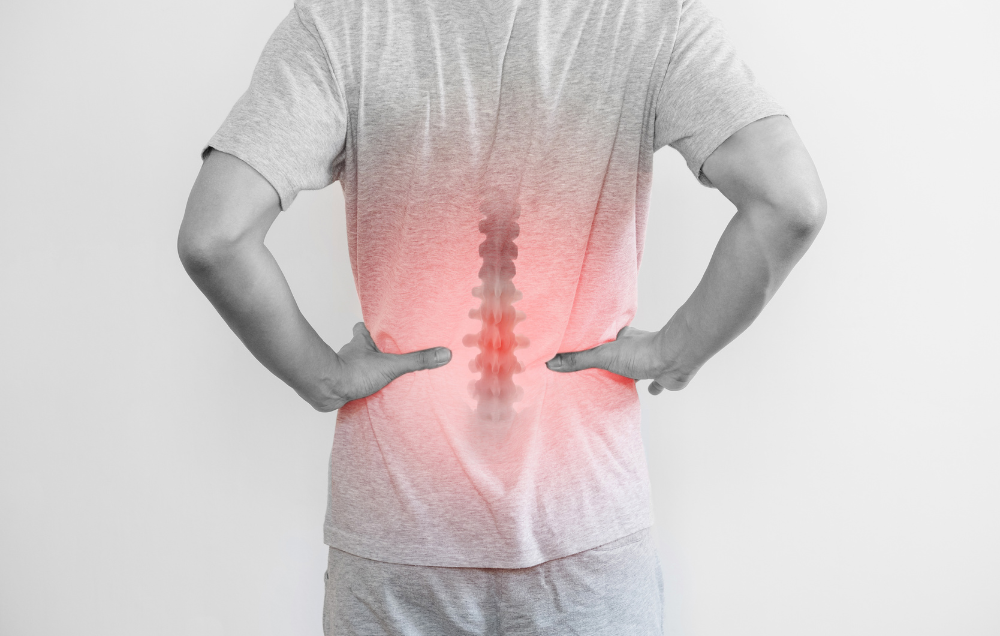Contents
Is lower back pain making it difficult for you to complete daily tasks? You may be dealing with a herniated disc. A herniated disc occurs when stress is placed on the spine, causing a disc in the back to become displaced and press on a pain-sensitive area such as a nerve. This is an even more common problem as people age and occurs in about 1% to 3% of people.
Herniated discs are no joke and can cause tremendous pain and reduced mobility. While some severe cases of herniated discs may require surgery, physical therapy can be an effective alternative for many people.
Physical therapy for a herniated disc
Many herniated discs do not require surgery, and in fact may respond better to physical therapy. The gentleness of physical therapy can be less stressful on the body and offer a long-term solution for herniated disc pain in the lower back. Let’s take a look at four physical therapy techniques that can help you find lower back pain relief:
- Aquatic therapy — For chronic lower back pain from a herniated disc, exercising in water can help relieve pressure on your spine while creating resistance to strengthen the muscles around it. Aquatic therapy uses many of the same movements and exercises as traditional physical therapy, but being in water can make it easier for people with significant pain to complete those exercises. Additionally, the pressure of the water offers both resistance to help you exercise more fully and hydrostatic pressure that can improve posture and help reduce swelling. If you struggle to exercise or move freely due to your lower back pain, aquatic therapy may be able to help you do more to heal.
- Manual therapy — Manual therapy is made up of several different types of physical therapy treatments that are all hands-on, meaning your physical therapist will use their hands to stretch and manipulate your joints. For a herniated disc, your physical therapist may use some hands-on techniques to provide relief from pain in the center of your back. By using manual therapy, your physical therapist will assist you so you can move and stretch in ways that might be difficult to do on your own. Joint mobilization and soft tissue manipulation can also help ease inflammation by increasing blood flow and loosening stiff muscles. Some physical therapists have a Certification in Orthopedic Manual Physical Therapy (COMT). This is a postgraduate speciality program that focuses on manual therapy techniques. At Lattimore PT, we have 30 fully certified COMTs who can use specialized manual therapy techniques to help you address your herniated disc.
- Spinal decompression — Spinal decompression is a type of traction therapy that works to gently stretch and reposition the spine using a manual lumbar traction table. The goal with this treatment is to stretch your back and reposition your spine to help alleviate future pain. Your physical therapist will affix straps from the table around your pelvis and trunk to stretch and angle your spine. This can relieve pressure on any damaged discs or pinched nerves in the lower back in a more ergonomic way. This is a gentle, noninvasive treatment that pairs well with other physical therapy techniques.
- Exercises — You may be familiar with some yoga poses that are great for stretching your back out, like cat and cow flexes, child’s pose, cobra, or seated twists. Your physical therapist will be able to show you a number of other exercises that can also help treat lower back pain due to a herniated disc. They can work with you to develop a unique exercise plan based on your pain and limitations to ensure that the exercises you do can help your pain without aggravating your condition further.
Some or all of these physical therapy modalities may be beneficial for you. Talk with your physical therapist to determine which treatment methods may work best for your condition.
Symptoms of a herniated disc
There are many possible symptoms of a herniated disc, and not all of them are as straightforward as you might think. Since spinal discs can press on different tissue in the back such as nerves, ligaments, tendons and muscles, the symptoms you may experience can be unexpected. Here’s a list of some common symptoms of a herniated disc:
- Weakness, typically in one leg.
- Muscle spasms and weakness.
- Pain that increases when you walk, run, or bend backward.
- Pain that radiates from the lower back into your buttocks or legs.
- Sharp pains or pins and needles in the lower back, buttocks, legs, and even feet.
- Disruptions in bowel and bladder function.
If you are experiencing disruptions in your bowel or bladder in addition to lower back pain, seek medical attention immediately. This is a serious symptom that should not be ignored.
Having some or all of these symptoms may be an indication of a herniated disc. Don’t wait until it gets worse to talk to your doctor, because the sooner you address your herniated disc, the less pain you’ll have to deal with.
A herniated disc doesn’t have to put a pause on your life. At Lattimore Physical Therapy, we can help you get back to a more mobile, less painful way of life. If you want to start addressing your lower back pain today, contact our team today for more information or to schedule an initial appointment.



